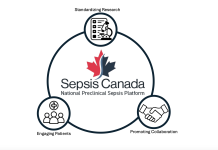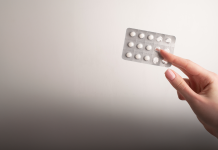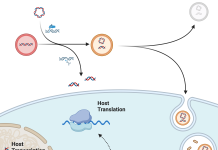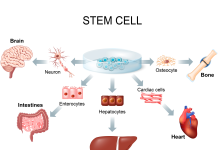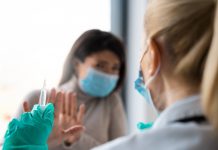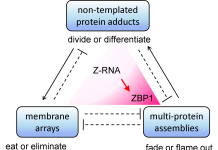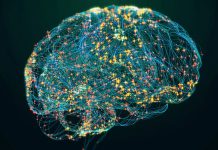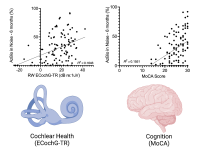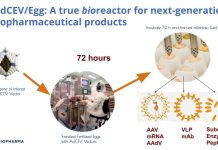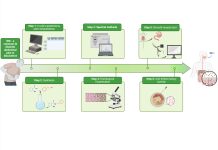Open Access Government produces compelling and informative news, publications, eBooks, and academic research articles for the public and private sector looking at health, diseases & conditions, workplace, research & innovation, digital transformation, government policy, environment, agriculture, energy, transport and more.
Home 2024
Archives
Making preclinical sepsis research stronger, faster, and more responsive to patients
Sepsis represents a significant global burden. The National Preclinical Sepsis Platform (NPSP) is leading vital sepsis research, informing policy, driving innovation, and ultimately saving lives.
Seasonality and climate change: Challenges for physical activity in older adults
Research indicates seasonal variations in physical activity levels among adults in different climates due to temperature and humidity. Climate change’s increasing extreme weather may significantly affect physical activity in older adults already struggling to meet activity guidelines. Isabelle J. Dionne from the Université de Sherbrooke explains.
Hormonal contraceptives and women’s mental health – A long-term perspective
Belinda Pletzer of the University of Salzburg discusses the importance of researching the mental health effects of hormonal contraceptives and the need to identify women at risk for adverse mood reactions before they start hormonal contraception.
Engineering interkingdom communication for next-generation therapeutic approaches
Brian Snyder and Christopher H. Contag, from Michigan State University, discuss engineering interkingdom communication, which is not for palace intrigue, but for next-generation therapeutic approaches they argue.
Adipose tissue: A treasure trove of stem cells for regenerative medicine
Adipose tissue, commonly known as fat, has long been considered a mere energy reservoir. However, recent discoveries have revolutionized our understanding of this tissue, placing it at the heart of advances in stem cells and regenerative medicine.
Modeling cigarette smoking exposure in subsets of the population
Understanding and acknowledging various factors that impact cigarette smoking and exposure is critical when creating public health interventions to curb tobacco use. Here, Theodore R. Holford from Yale University discusses the impact of different approaches to tobacco control.
Vaccine hesitancy and the challenge of successful scientific communication
Drawing on personal experiences and public discourse, Dr. Klaus Eyer, an Associate Professor at Aarhus University, explores the challenges of communicating about vaccine science to address vaccine hesitancy.
Understanding and predicting the intergenerational transmission of mental illness
The FAMILY consortium aims to improve the lives of mentally ill persons and their families by focusing on understanding the mechanisms of intergenerational transmission of mental illness from parent to child.
Cellular scaffolding: Crowdsourcing cellular responses in health and disease
In this article, Dr Alan Herbert discusses how different types of cellular scaffolds interact and impact the risk of diseases, citing the example of Z-RNAs pushing cells to inflammatory states in tumors and autoimmune conditions, setting the stage for new therapeutics.
The sociology of bridge: Sport recognition for mind sports
The game of contract bridge, as we know it today, originated in the 20th century – but what lies ahead for bridge as a mind sport? Professor Samantha Punch, the academic behind “Bridge: A MindSport For All”, provides the answer.
Timely diagnosis and intervention for people with dementia
Jockey Club Centre for Positive Ageing experts highlight the importance of timely diagnosis and intervention for people with dementia.
A novel avenue to explore in the treatment of dementia
A collaborative project between the University of South Florida and The Healthy Aging Company is exploring how a new biological entity called ALF5755 could be a candidate drug for the treatment of dementia and Alzheimer’s disease.
Cognitive function and electrode mapping’s role in cochlear implant performance
Amit Walia, Matthew Shew and Craig A. Buchman from Washington University School of Medicine, detail the role of cognitive function and electrode mapping in cochlear implant performance.
Personalized medicine beyond cancer: Impact on other diseases
With a focus on type 2 diabetes and Parkinson’s disease, Dr Priya Hays explores how personalized medicine approaches are impacting the development of therapies for other chronic conditions beyond cancer.
Catalysing vaccines and biologics manufacturing in Africa
Professor Faith Osier, Director of the Chanjo Hub at Imperial College London, shares her vision for vaccines and biologics manufacturing in Africa to secure lives and livelihoods and drive economic growth.
Identifying potential exercise mimetics that deliver the benefits of exercise
Robert Wessells, Associate Professor at Wayne State University, discusses his research on identifying potential exercise mediators or mimetics to deliver the benefits of exercise to less mobile individuals and help reduce the global disease burden.
Persistent anti-vaxxers and pandemic-induced new anti-vaxxers
Read this analysis of persistent anti-vaxxers and pandemic-induced new anti-vaxxers by Fujio Toriumi, Professor at the University of Tokyo in Japan.
Tuning into musicians’ wellbeing: Research on music performance anxiety (MPA)
The Music and Mental Health Research Clinic (MMHRC) at the University of Ottawa’s Institute of Mental Health Research (IMHR) at The Royal is investigating how to reduce music performance anxiety (MPA) and the benefits of specific coping strategies for musicians.
Harnessing hybrid molecules for drug development
Stoyanka Nikolova, Professor from Paisii Hilendarski Plovdiv University, discusses the potential of harnessing hybrid molecules for drug development and their possible application in addressing the clinical challenge of irritable bowel syndrome.
Early intervention in eating disorders
Tracey Wade from Flinders University, charts an implementation approach to early intervention in eating disorders.

